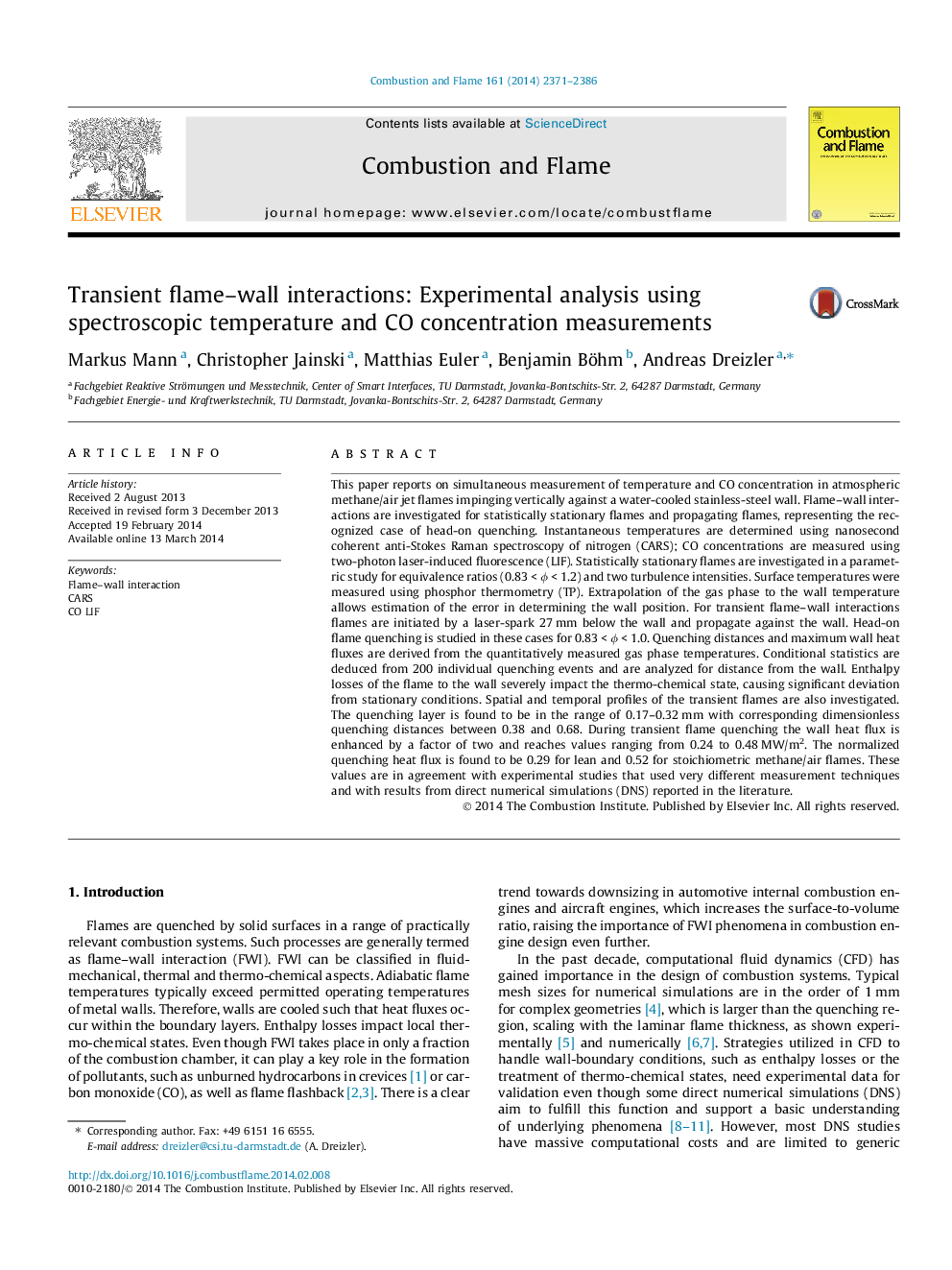| Article ID | Journal | Published Year | Pages | File Type |
|---|---|---|---|---|
| 168561 | Combustion and Flame | 2014 | 16 Pages |
This paper reports on simultaneous measurement of temperature and CO concentration in atmospheric methane/air jet flames impinging vertically against a water-cooled stainless-steel wall. Flame–wall interactions are investigated for statistically stationary flames and propagating flames, representing the recognized case of head-on quenching. Instantaneous temperatures are determined using nanosecond coherent anti-Stokes Raman spectroscopy of nitrogen (CARS); CO concentrations are measured using two-photon laser-induced fluorescence (LIF). Statistically stationary flames are investigated in a parametric study for equivalence ratios (0.83 < ϕ < 1.2) and two turbulence intensities. Surface temperatures were measured using phosphor thermometry (TP). Extrapolation of the gas phase to the wall temperature allows estimation of the error in determining the wall position. For transient flame–wall interactions flames are initiated by a laser-spark 27 mm below the wall and propagate against the wall. Head-on flame quenching is studied in these cases for 0.83 < ϕ < 1.0. Quenching distances and maximum wall heat fluxes are derived from the quantitatively measured gas phase temperatures. Conditional statistics are deduced from 200 individual quenching events and are analyzed for distance from the wall. Enthalpy losses of the flame to the wall severely impact the thermo-chemical state, causing significant deviation from stationary conditions. Spatial and temporal profiles of the transient flames are also investigated. The quenching layer is found to be in the range of 0.17–0.32 mm with corresponding dimensionless quenching distances between 0.38 and 0.68. During transient flame quenching the wall heat flux is enhanced by a factor of two and reaches values ranging from 0.24 to 0.48 MW/m2. The normalized quenching heat flux is found to be 0.29 for lean and 0.52 for stoichiometric methane/air flames. These values are in agreement with experimental studies that used very different measurement techniques and with results from direct numerical simulations (DNS) reported in the literature.
